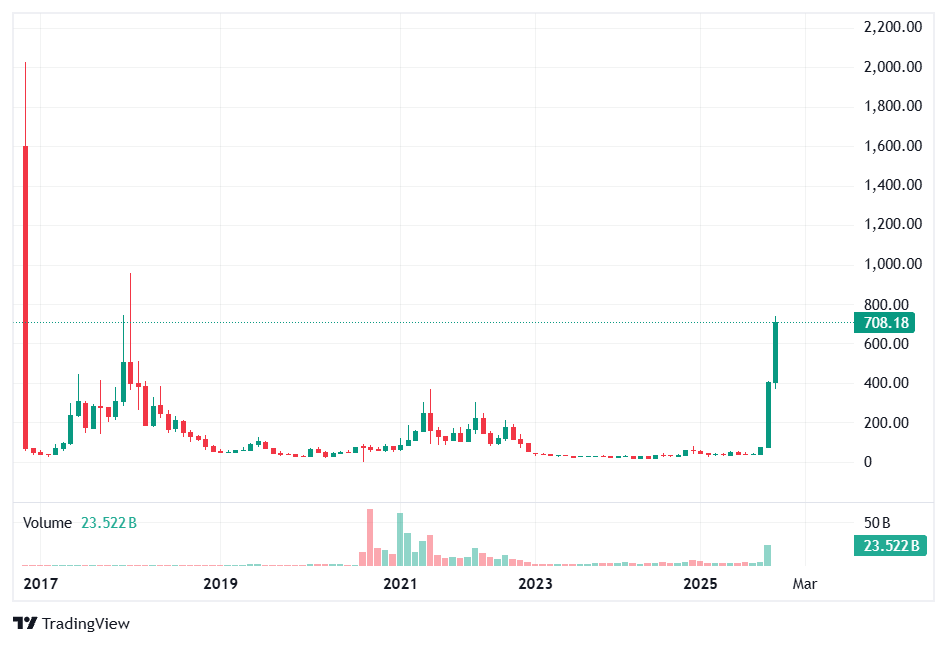Zcash’s recent run has caught the attention of some of crypto’s most sophisticated money — yet it’s also showing the fine line between trend and overheat. Over the past week, ZEC climbed sharply as institutional treasury schemes and renewed interest in privacy tokens intersected. But as the coin breaks into new territory, traders and analysts alike are asking whether the fundamentals back up the hype or if a correction is due.
What triggered the move? One high-profile catalyst: a newly rebranded entity, Cypherpunk Technologies Inc. (formerly Leap Therapeutics), announced it purchased over 200,000 ZEC using approximately US $50 million of funding. At the same time, data show that Zcash’s explosion of momentum is not being driven purely by retail traders; Despite its price gains ZEC is still under-the‐radar among mass-market crypto participants.

The timing is notable: while many altcoins have struggled amid macro uncertainty, privacy-oriented assets like ZEC have benefited from narrative shifts. One report pegged Zcash’s rally at 1,500% over three months, suggesting that some investors are treating it as more than just a speculative altcoin—part hedge, part tech bet. According to exchange and on-chain sources, ZEC is now trading in the US$650-700 range, significantly above where it was just a few weeks ago.
Yet those same market watchers are raising caution flags. Liquidity is there, but one key question lingers: can Zcash maintain performance when broader crypto sentiment turns negative? Some technical models already suggest ZEC is at risk of a pull-back if key supports break. On the policy side, privacy tokens have long lived in the regulatory grey zone. Zcash’s proposition relies on “shielded transactions” and heavy cryptographic architecture that invites extra scrutiny, even as institutions show curiosity.
For traders, the interplay between narrative and structure is playing out in real-time. The institutional backing adds credibility, but history reminds us that surges without broad retail participation often end with consolidation rather than sustained outperformance. That said, Zcash’s case carries some extra weight because the narrative isn’t purely speculative—it taps into the growing global debate over financial privacy, data surveillance and permits cryptographic insulation from public ledgers.
Looking ahead, key watch-points include whether other institutional treasuries follow Cypherpunk’s path, how much coin enters shielded pools (a marker of true usage vs speculation), and whether regulatory commentary begins to shift around privacy-focused digital assets. On the market side, can ZEC hold above the $600-650 zone? If it does, the next leg toward $800 or more becomes viable. If not, the recent strength could erode quickly.
In short, Zcash is juggling two roles: a narrative bet on privacy and a real tradable asset for institutional wallets. Right now the narrative is winning. Whether the asset side keeps up remains to be seen—but that very interplay may define how the privacy token sector evolves in the next six to twelve months.
Stay informed with daily updates from Blockchain Magazine on Google News. Click here to follow us and mark as favorite: [Blockchain Magazine on Google News].
Disclaimer: Any post shared by a third-party agency are sponsored and Blockchain Magazine has no views on any such posts. The views and opinions expressed in this post are those of the clients and do not necessarily reflect the official policy or position of Blockchain Magazine. The information provided in this post is for informational purposes only and should not be considered as financial, investment, or professional advice. Blockchain Magazine does not endorse or promote any specific products, services, or companies mentioned in this posts. Readers are encouraged to conduct their own research and consult with a qualified professional before making any financial decisions.